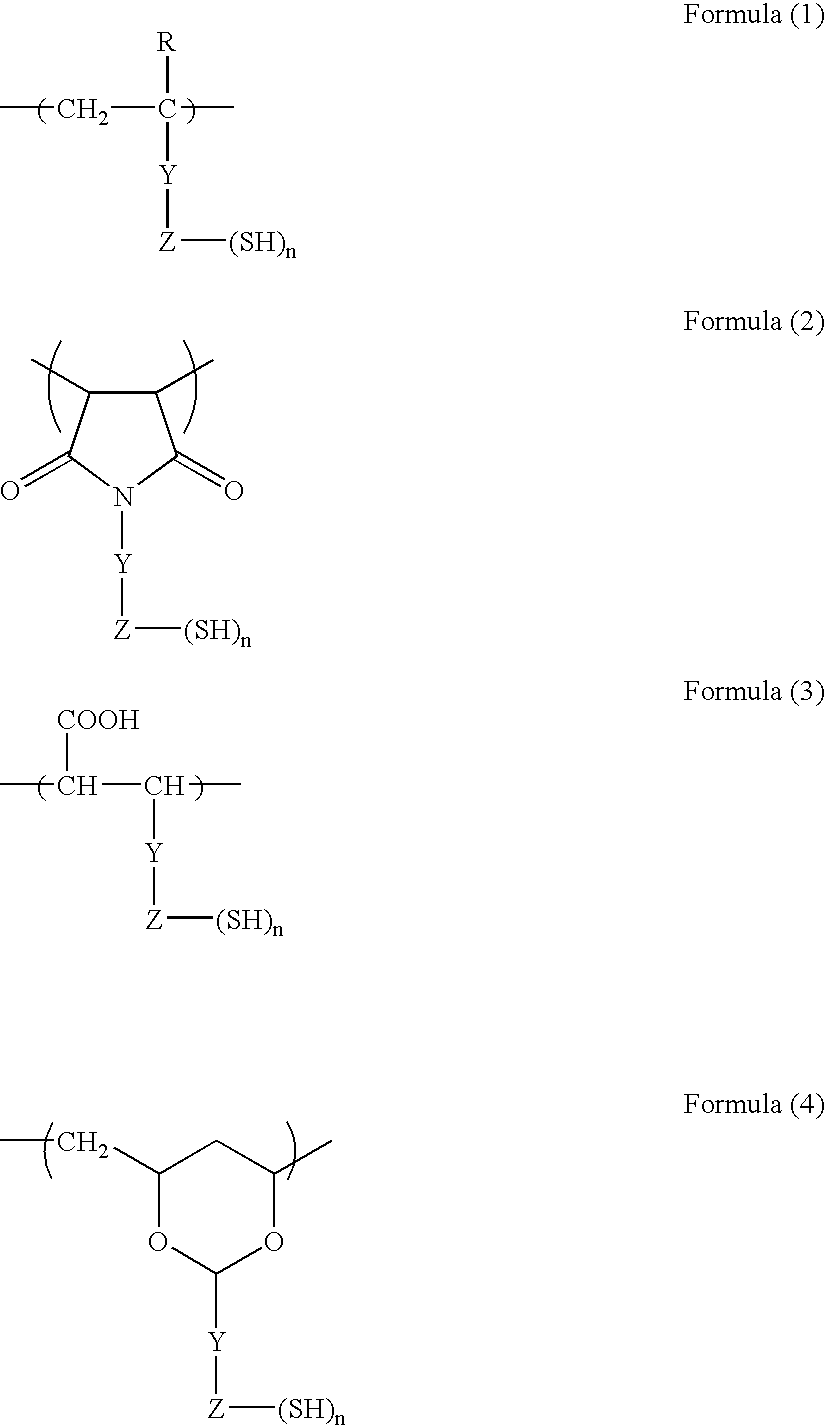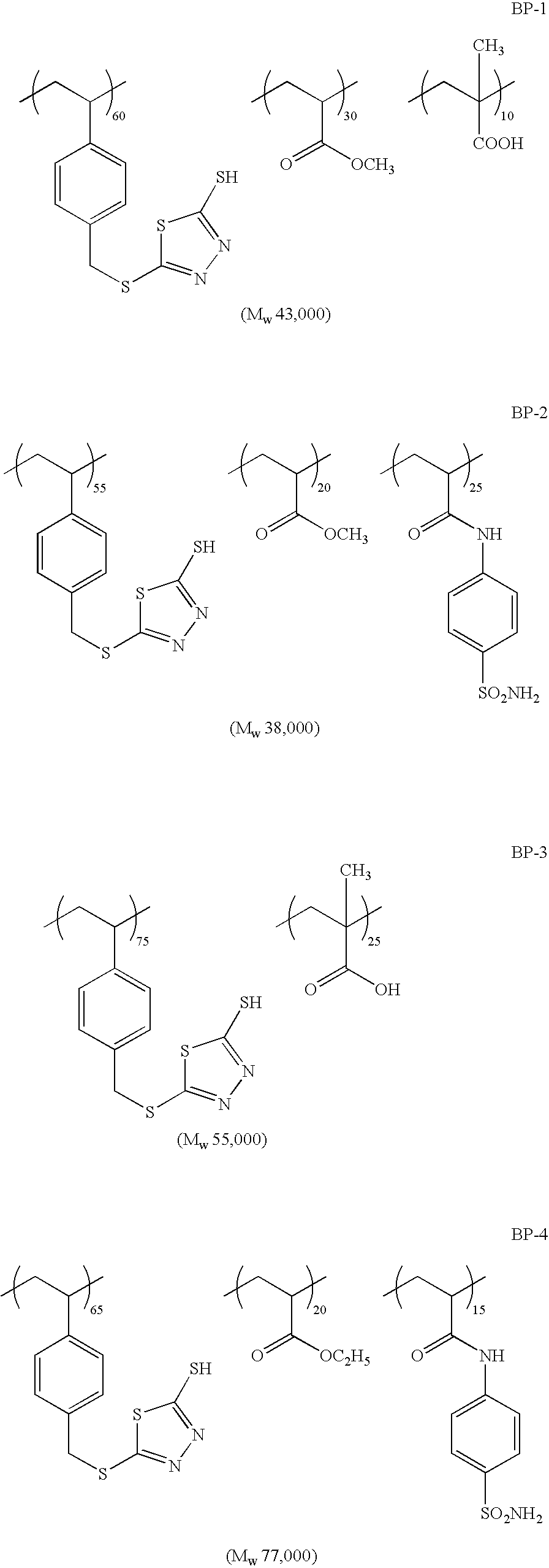Planographic printing plate precursor
- Summary
- Abstract
- Description
- Claims
- Application Information
AI Technical Summary
Benefits of technology
Problems solved by technology
Method used
Image
Examples
Example
Examples 1 to 3 and Comparative Example 1
(Production of a Support)
(Aluminum Plate)
[0290] An aluminum alloy comprising 0.06% by mass of Si, 0.30% by mass of Fe, 0.025% by mass of Cu, 0.001% by mass of Mn, 0.001% by mass of Mg, 0.001% by mass of Zn and 0.03% by mass of Ti, with the balance made of Al and inevitable impurities, was used to prepare a molten metal. The molten metal was filtrated, and then an ingot having a thickness of 500 mm and a width of 1200 mm was produced by DC casting.
[0291] Its surface was shaved by a thickness of 10 mm on average with a surface-shaving machine, and then the ingot was kept at 550° C. for about 5 hours. When the temperature thereof lowered to 400° C., a hot rolling machine was used to produce a rolled plate having a thickness of 2.7 mm. Furthermore, a continuous annealing machine was used to thermally treat the plate thermally at 500° C. Thereafter, the plate was finished by cold rolling so as to have a thickness of 0.24 mm. In this way, an ...
Example
[0324] The structure of the macromolecular compound (BP—C) used in Comparative Example 1 is shown below. The macromolecular compounds used in the examples are specific macromolecular compounds (A), whose structure is described in this specification.
[0325] It was found from the results of the above Table 1 that the planographic printing plate precursors of Examples 1 to 3 using specific macromolecular compounds (A), which are the characteristic component of the invention, as a lower layer component gave superior developing characteristics of the non-image portions, printing durability, chemical resistance and ink adherence. On the other hand, it was confirmed that the planographic printing plate precursor of Comparative Example 1, using no specific macromolecular compound (A), was inferior to those of the Examples in printing durability, chemical resistance and ink adherence.
Example
Examples 4 and 5 and Comparative Example 2
(Production of a Support)
[0326] A support for planographic printing plate precursors was produced using the samesubstrate treatment as in Example 1 except that the silicate treatment, after performing the anodic oxidation treatment, was not carried out.
(Formation of a Recording Layer (Monolayer))
[0327] A recording layer (monolayer) coating solution having the following composition was applied to the support obtained above and dried such that the dry coating amount was 1.10 g / m2 to form a recording layer thereby obtaining a planographic printing plate precursor.
[0328]Novolac resin (m / p-cresol ratio = 6 / 4,0.5gweight average molecular weight: 7,000 andunreacted cresol: 0.5 mass %)Macromolecular compound described in Table 21.0gCyanine dye A (structure as above)0.15gPhthalic acid anhydride0.05gp-Toluenesulfonic acid0.002gCompound obtained by changing the counter anion0.02gof Ethyl Violet to 6-hydroxy-β-naphthalenesulfonic acidFluorine typ...
PUM
 Login to View More
Login to View More Abstract
Description
Claims
Application Information
 Login to View More
Login to View More - R&D
- Intellectual Property
- Life Sciences
- Materials
- Tech Scout
- Unparalleled Data Quality
- Higher Quality Content
- 60% Fewer Hallucinations
Browse by: Latest US Patents, China's latest patents, Technical Efficacy Thesaurus, Application Domain, Technology Topic, Popular Technical Reports.
© 2025 PatSnap. All rights reserved.Legal|Privacy policy|Modern Slavery Act Transparency Statement|Sitemap|About US| Contact US: help@patsnap.com



